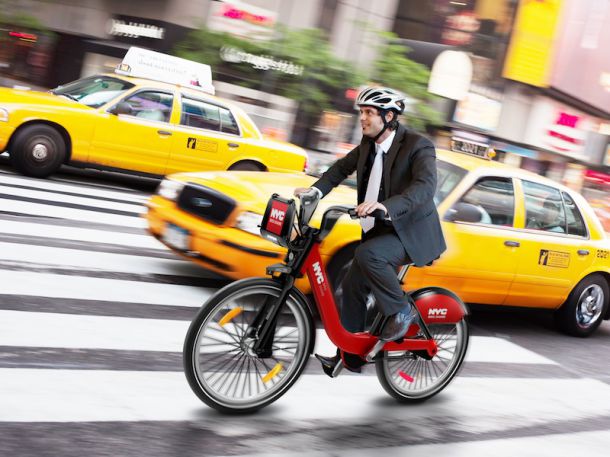
New York City will soon offer a bike share program, joining an exclusive yet growing cadre of international cities offering similar programs. The program, which will begin this July, took inspiration from many other global cities, including Paris, Barcelona, Milan, Amsterdam, and Montreal. In some countries, like Germany, bike share programs can be found in most of the bigger cities.Paris’s bike share program is New York’s primary model due to similarities in the cities’ populations and infrastructures. Vélib’, the Paris program, opened in 2007 with an ambitious 7,000 bikes, and since has expanded to include over 20,000 bikes and log millions of trips each year. The program is one of the largest in the world, and its scope inspired New York City to follow suit.New York has a larger total number of bicycle commuters than most other major American cities, according to a 2009 feasibility study, and about 10 percent of the population bicycles regularly. This data, along with the fact that a large percentage of New York’s workforce lives within biking distance of their workplaces, suggests that New Yorkers are ready and perhaps even eager for the program’s arrival.Here is how it will work: Users purchase a long-term or short-term membership, which is linked to their credit card. Kiosks are located throughout the city, where users can unlock a bicycle with either a key fob or an input code. In New York, kiosks can be requested at a specific location on the NYC Bike Share website, and a number of potential locations have already beenannounced.The NYC Bike Share Program will start with over 10,00 bikes at 600 locations, and a yearly membership will cost roughly $100. Yearly subscribers will enjoy an unlimited number rides that are shorter than 30 minutes, which will encourage short commutes and frequent sharing. After that, users may pay a fee for rides that last up to two hours.Bike share programs first emerged in the 1960s with Amsterdam’s Witte Fietsen, or “White Bikes,” program. The program quickly collapsed after many of the bikes were either stolen or destroyed. However, a second generation of bike shares re-emerged in Europe in 1995 with Copenhagen’s Bycyklen, or City Bikes, program. Although the program sill experienced problems with theft, it performed better than the White Bikes program. Thus the bike sharing idea persevered, and improved programs sprouted up across Europe.There are a number of reasons that bike shares have become popular, including decreased traffic congestion and pollution, heightened safety for the overall cyclist population, and daily exercise for bike commuters. (And probably one of the most eagerly awaited aspects of the New York program will be a solution to the problem of where to park bicycles in midtown.)Of course, a bike share program may not solve all of New York City’s transportation, pollution, and health problems, and like any newly introduced system, may present its own set of challenges.However, with a high-density population and an extensive and increasing network of bike lanes, New York City has the opportunity to create the a successful bike share program and change the look and feel of its streets.

